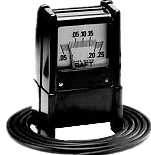

Stack temperature - the hot spot: The flue gas temperature should be measured in the flue gas hot spot. The ambient air temperature is used to determine the net stack temperature it will not affect other combustion gas calculations. Often this measurement requires an additional probe to measure inlet air temperature when combustion air comes into the burner directly from the outside, as in the case of a sealed combustion furnace. This maximum theoretical level is never reached in practice.Īmbient air temperature: The ambient air temperature is measured at the burner inlet.
Natural gas - 11.8 percent by volume CO2. Light fuel oil - 15.4 percent by volume CO2. The CO2 reading is calculated from the O2 reading by the analyzer.Įach fuel has a maximum possible CO2 level (CO2 max), which is determined by the chemical composition of the fuel: If the production of CO2 is as high as possible with slight excess air (complete combustion), the flue gas heat losses are at their lowest. Also, excess air lowers the dew point of the flue gases by dilution, thereby lowering the probability of condensation in the stack in noncondensing appliances.Ĭarbon dioxide (CO2) reading: The CO2 level in the flue gas provides an indication of the efficiency of the combustion process. Residential furnaces often do not provide combustion air adjustment provisions, because manufacturers have determined that the safety gained by providing additional air to ensure complete combustion outweighs the potential savings that adjustment might provide. Always make sure that all burner shields are in place to avoid the entry of excess secondary air. Excess air readings should always fall within the manufacturer’s published guidelines. The O2 reading should be monitored to produce a flame with the lowest excess air reading possible while maintaining a safe level of CO in the stack. While the air always contains 20.9 percent O2 by percentage, the amount of O2 by mass provided to the burners varies with the air density. The oxygen level in the atmosphere remains constant (20.9 percent), and is the only true constant in the combustion process. Oxygen (O2) reading: The O2 reading is by far the most important reading an analyzer measures with regard to combustion. It does not factor in how efficiently heat manufactured in the combustion process is used. Combustion efficiency is representative of the combustion process and associated stack losses. The combustion efficiency calculation is a reasonable estimation of the appliance thermal efficiency, but it is not representative of the published AFUE. The efficiency calculation is based on the theoretical heat value of the fuel being burned, minus the stack losses. Therefore, the combustion equation has been developed to determine whether a combustion process is being properly handled. If multiple draft-induced appliances are common vented, make sure spillage does not occur through the heat exchanger and out through the burner openings of the adjoining appliance while it is in its stand-by position (off).Ī combustion test should be the first and last step of every fossil fuel appliance inspection.ĮFFICIENCY CONSIDERATIONS It is not possible to measure the theoretical temperature of a combustion process in the field, due to dilution of the gases and absorption of the heat by radiation to the surrounding areas. Kitchen exhaust fans, basement doors opening or closing, etc., should not affect draft. 
If both appliances are common vented, both should be draft tested.

Verify that flue gases are not spilling through the draft hood on the atmospheric appliance when it is operating by itself. If draft-induced and atmospheric appliances are common vented, always verify that the atmospheric appliance is not spilling when both appliances are operating. (This is the maximum time allowed for an appliance to spill before the spill switch trips.) A system that has been under operation should have or establish draft very quickly. Note: If the appliance and chimney are cold, it can take up to 10 minutes to establish draft. The analyzer will record and store the draft reading for the flue gas measurement screen and printout. It will increase as the flue warms, until it reaches a maximum flue temperature and stabilizes. Under ANSI (American National Standards Institute) standards, an appliance has five minutes to prove draft.ĭuring steady-state operating conditions, the draft should be stable. All appliances requiring draft are required to have and maintain draft during operation.







 0 kommentar(er)
0 kommentar(er)
